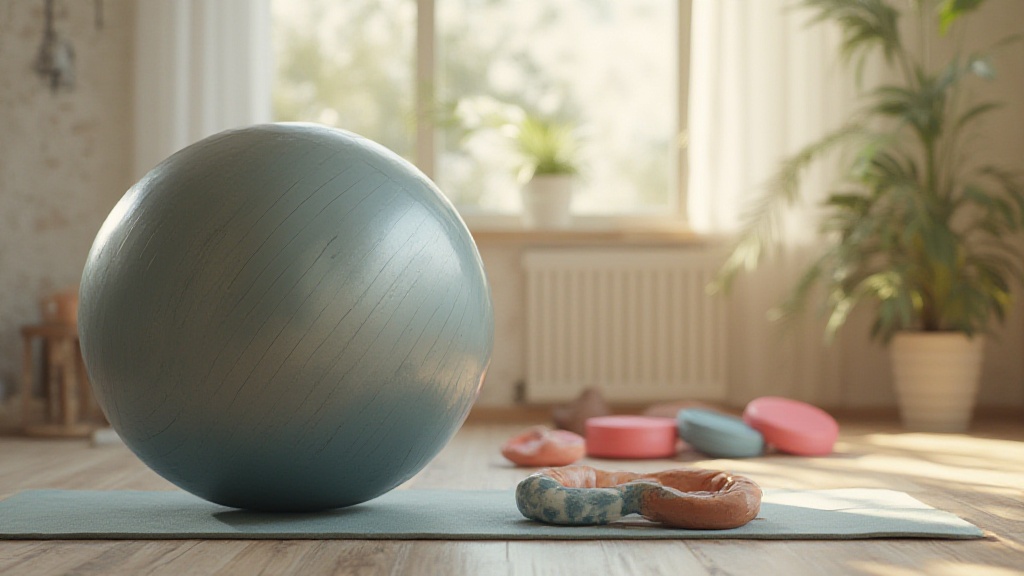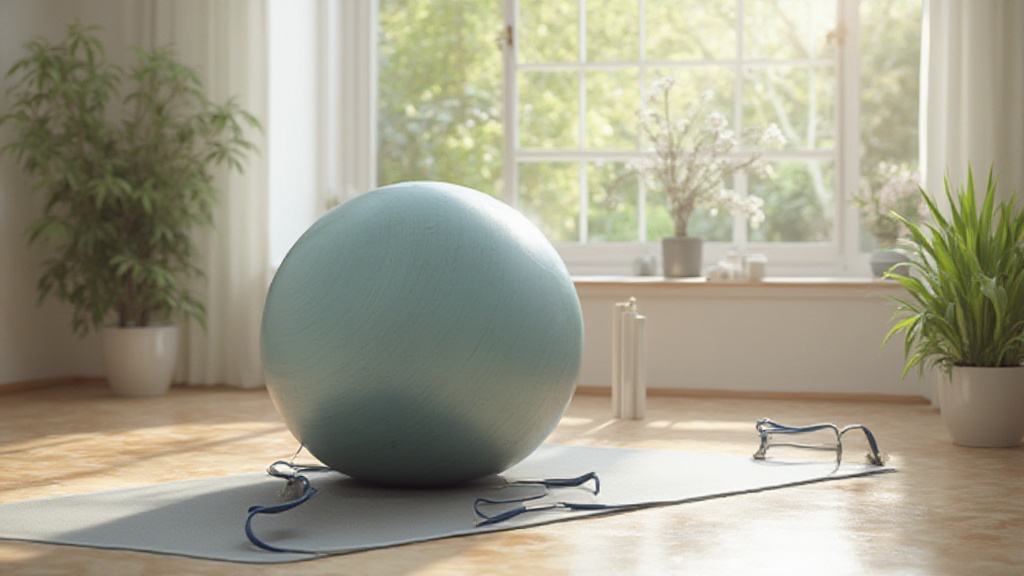
Enhanced athletic performance is significantly linked to effective core stabilization techniques. Prioritizing core training improves not only your physical capabilities but also your daily activities.
Implementing various stability exercises engages abdominal muscles, erector spinae, and hip flexors, optimizing your overall fitness.
Focusing on dynamic movements and static holds can yield remarkable results.
Incorporating core workouts into your routine fosters muscle activation and promotes injury prevention. Consequently, a strong core translates into improved body alignment and functional fitness, essential for peak performance in any sport.
Core Strength’s Significance for Stability
Core strength serves as a foundational element for achieving overall stability, which is essential for maintaining balance and posture during various activities.
Core training enhances the transverse abdominis, rectus abdominis, and other key muscle groups supporting the spine. This stabilization is essential for effective movement patterns, as a strong core lowers the risk of injuries associated with poor body mechanics.
Effective Exercises for Core Stability
To improve your core stability, consider the following exercises that engage key muscle groups:.
- Planks: A fundamental exercise focusing on engaging core muscles for optimal alignment.
- Bridges: Enhancing lower back stability while activating the glutes and hip flexors.
- Birddogs: Promoting coordination and balance, targeting the erector spinae and obliques.
Strengthening your core through these exercises not only boosts athletic performance but also enhances daily functional movements.

Integrating Core Stability into Your Routine
Incorporating core stability exercises into your fitness programming can significantly contribute to your overall fitness goals. By focusing on strength training and flexibility work, you can create a balanced routine that promotes core engagement and improves overall stability. This integration supports injury prevention and enhances body alignment.
How Do Core Training Techniques Work
The mechanics of core training techniques reveal how various methods engage muscles, enhancing core strength and stability. The primary muscle groups targeted during core training include the rectus abdominis, obliques, and transverse abdominis.
For example, performing exercises like the plank showcases how these muscles work synergistically to stabilize the body.
This isometric hold effectively engages multiple muscle groups, promoting functional movement patterns.
By maintaining this position, core training enhances muscle endurance and overall stability, both of which are essential for daily activities and athletic performance.
Engaging Abdominal Muscles Effectively
Effective abdominal muscle engagement plays a significant role in achieving core stability. Properly engaged abdominal muscles contribute to maintaining body alignment and improving posture during workouts.
Poor activation of these muscles can result in muscle imbalances, potentially leading to injuries. To enhance abdominal engagement, incorporating targeted drills can be beneficial.
Suggested Drill: Dead Bug Exercise
The dead bug exercise focuses on promoting core stability while enhancing proprioception.
This drill allows athletes to maintain control and alignment, which is essential for successful core workouts.
Key benefits of the dead bug exercise include:.
- Improved motor control: Enhances the ability to coordinate movements effectively.
- Increased awareness: Develops a better understanding of body positioning.
- Support for injury prevention: Reduces the risk of injuries during physical activities.
Ultimately, effective abdominal engagement supports athletic performance and minimizes the likelihood of injury, making it a critical component of a comprehensive core training program.
Core Training Techniques
- Core training significantly enhances overall body stability, which is crucial for athletic performance.
- Engaging the abdominal muscles properly improves body alignment and posture during physical activities.
- Exercises like the dead bug promote better motor control and proprioception among athletes.
- Effective core training reduces the risk of injuries by addressing muscle imbalances and enhancing stability.
Benefits Of Lower Back Stability Exercises
Engaging in lower back stability exercises is essential for maintaining a healthy spine and enhancing overall fitness. These stability exercises support the erector spinae muscles, improving posture and reducing strain on the back.
Effective stability routines can act as injury prevention strategies; specifically, they mitigate the risk of injuries associated with poor core strength.
For example, the Bird-Dog exercise not only strengthens the lower back but also enhances coordination by requiring simultaneous limb extension.
Prioritizing lower back stability directly correlates with improved athletic performance and contributes to a more resilient body.
Exploring Hip Flexors In Core Stabilization
The function of hip flexors significantly impacts core stability, making their role pivotal for maintaining balance and posture. Flexible hip flexors enhance overall core strength, allowing for more effective movement patterns.
Conversely, tight hip flexors can limit core engagement, leading to lower back discomfort. This connection is part of the broader kinetic chain, wherein poor hip flexor function negatively affects multiple muscle groups.
Incorporating functional movements such as the Kneeling Hip Flexor Stretch into your routine can significantly improve hip flexibility while supporting better core stability.
This exercise emphasizes dynamic movements that promote core integration and contribute to overall fitness.
| Exercise Type | Benefit |
|---|---|
| Lower Back Stability Exercises | Improves posture and reduces back strain |
| Bird-Dog Exercise | Strengthens lower back and enhances coordination |
| Kneeling Hip Flexor Stretch | Improves hip flexibility and supports core stability |
| Core Engagement | Prevents lower back discomfort and enhances movement patterns |
Role Of Pelvic Floor In Core Fitness
The pelvic floor serves as a fundamental element of core strength and stability. This group of muscles supports the pelvic organs while also providing a strong foundation for movement and posture.
Strong pelvic floor muscles significantly enhance overall core strength by stabilizing the pelvis and spine during various activities.
Incorporating pelvic floor health into a holistic fitness approach not only improves functional fitness but also promotes overall well-being.
To effectively incorporate pelvic floor exercises into your routine, practice Kegels by contracting and relaxing these muscles for several repetitions. By focusing on core engagement, individuals can significantly enhance their fitness journey, enabling better body alignment and injury prevention.
Dynamic Movements For Core Conditioning
Integrating dynamic movements into core workouts offers substantial benefits for overall strength.
These exercises engage multiple core muscles, contributing to improved functional fitness. Incorporating dynamic movements into your workouts helps to mimic real-life activities, thereby enhancing strength, balance, and stability.
One effective dynamic exercise is the bird-dog, which actively engages the abdominal muscles while promoting coordination.
To perform this exercise:.
- Start on all fours.
- Extend one arm forward and the opposite leg backward.
- Return to the starting position and switch sides.
Consistently practicing dynamic movements leads to improved athletic performance and reduces the risk of injury. Such exercises not only enhance core conditioning but also promote muscle activation and stability necessary for various fitness goals.
Core Fitness and Pelvic Floor Health
- Strengthening the pelvic floor can improve posture and reduce back pain.
- Dynamic movements like the bird-dog can enhance coordination and balance.
- Regular pelvic floor exercises can lead to better control during physical activities.
- Engaging multiple core muscles through dynamic workouts can improve overall athletic performance.
Mastering Stability Exercises For Injury Prevention
Stability exercises are essential for enhancing core strength, which plays a significant role in preventing injuries during physical activities. By focusing on core engagement, individuals can improve their balance and overall stability.
For instance, incorporating the Plank into your routine not only targets the rectus abdominis and transverse abdominis but also fortifies lower back stability.
To perform this effective exercise, align your body in a straight line from head to heels, engaging your abdominal muscles and maintaining a neutral spine.
Holding the Plank for 30 seconds to a minute will enhance your core stability, thereby mitigating injury risks in both athletic performance and daily activities.
Implementing Core Training for Enhanced Injury Prevention
Integrating core training throughout various workouts fosters resilience against injuries. Stability exercises such as bridges and birddogs promote muscle activation and glute activation, essential for maintaining proper body alignment.
These exercises challenge proprioception, a key factor in injury prevention. For example, performing bridges requires you to lie on your back with your knees bent, lifting your hips while engaging your core.
This action significantly enhances lower back stability, preparing your body for dynamic movements encountered in daily life.
Stability Exercises
- Core strength is crucial for preventing injuries during physical activities.
- Stability exercises improve balance and overall body stability.
- Holding a Plank for 30 seconds to a minute can significantly enhance core stability.
- Exercises like bridges and birddogs promote muscle and glute activation, essential for body alignment.
